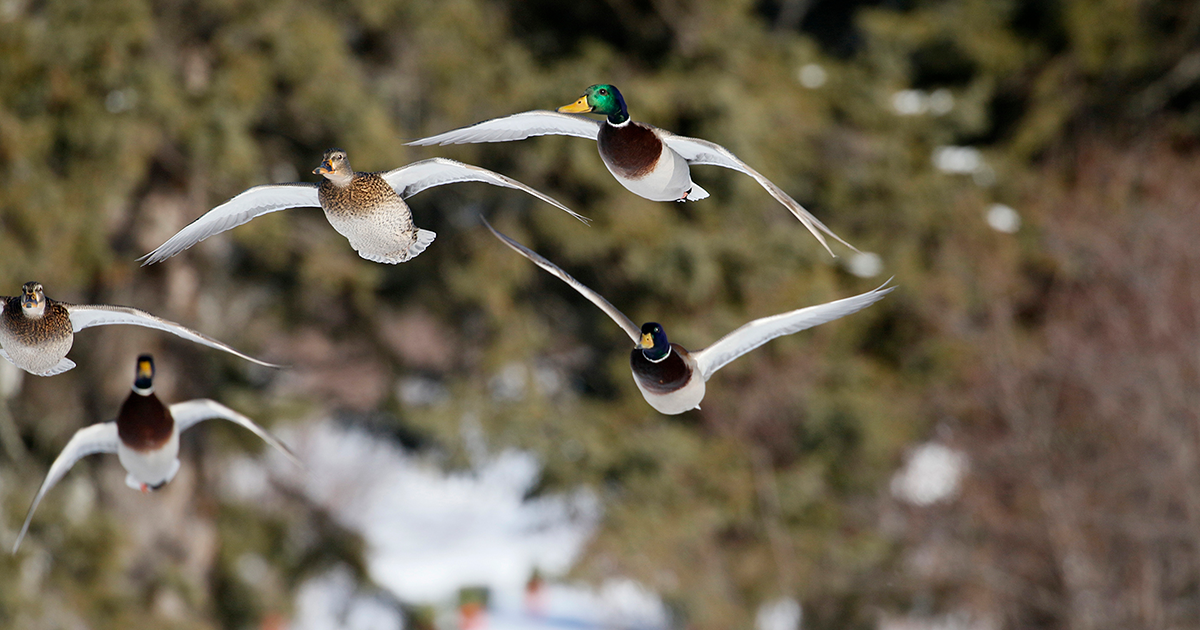Migration Alert: Winter Weather in the New Year Sparks Hope in Central Flyway
Jan. 5, 2024 – Central Flyway Update
Jan. 5, 2024 – Central Flyway Update

A pair of winter weather systems forecasted to impact portions of the Central Flyway in the coming days could provide some relief to hunters looking to end their seasons on a good note. Here's a closer look at bird numbers and habitat conditions in key areas of the flyway.
Over the past week, waterfowl managers across the Central Flyway have conducted annual mid-winter surveys of duck and goose populations, and as expected, the availability of open water and food resources have allowed congregations of birds to remain scattered across the northern tier of the flyway.
Actual numbers from the surveys are not yet available, but Mike Szymanski with the North Dakota Game and Fish Department confirms that mild weather during the months of November and December have allowed geese to remain in large numbers in the state.
"Based on initial information, I think our Canada goose numbers are going to come back extremely high," Szymanski says, adding that North Dakota rarely holds a large number of mallards into January, and this year doesn't appear to be any different.
"We aren't holding a bunch of mallards up here. Our mid-winter Canada goose numbers will be pretty impressive, though," Szymanski says.
Rocco Murano, chief waterfowl biologist with the South Dakota Game, Fish and Parks, won't confirm waterfowl numbers in the state until the survey figures are released, but he does note that portions of the state typically void of waterfowl in early January were included in the survey this year because birds have remained to take advantage of the conditions created by months of mild weather.
"There have been concentrations of mallards, snow geese, and Canada geese in areas that usually do not have birds by this time of the year," Murano says. "Those numbers have changed in just the last few days, however, as our overnight temperatures have gotten just cold enough to freeze our lakes and move some of those birds out of the eastern half of the state."
According to reports, mallards do remain in central South Dakota, where large portions of the Missouri River remain ice-free, and there is no snow cover on surrounding fields and other food sources.
Hunters in the south waiting on a larger exodus of waterfowl from the Dakotas and mid-latitude states like Nebraska, Iowa, and Missouri could see some relief through a pair of winter weather systems forecasted to impact these areas in the coming week. The first system is scheduled to bring heavy snow and strong winds toward the end of this weekend, while the end of next week will see the arrival of the first bitterly cold temperatures of the season extending down the flyway.
According to Murano, the impact of this weather on waterfowl concentrations will depend on the severity and duration of the snow and cold.
"At this point of the year, when the days are already starting to get longer, it takes some real winter weather to get ducks and geese moving," he says. "This could be enough to shake some things loose. It will be a game of wait-and-see."
Stay up to date with the latest migration information.